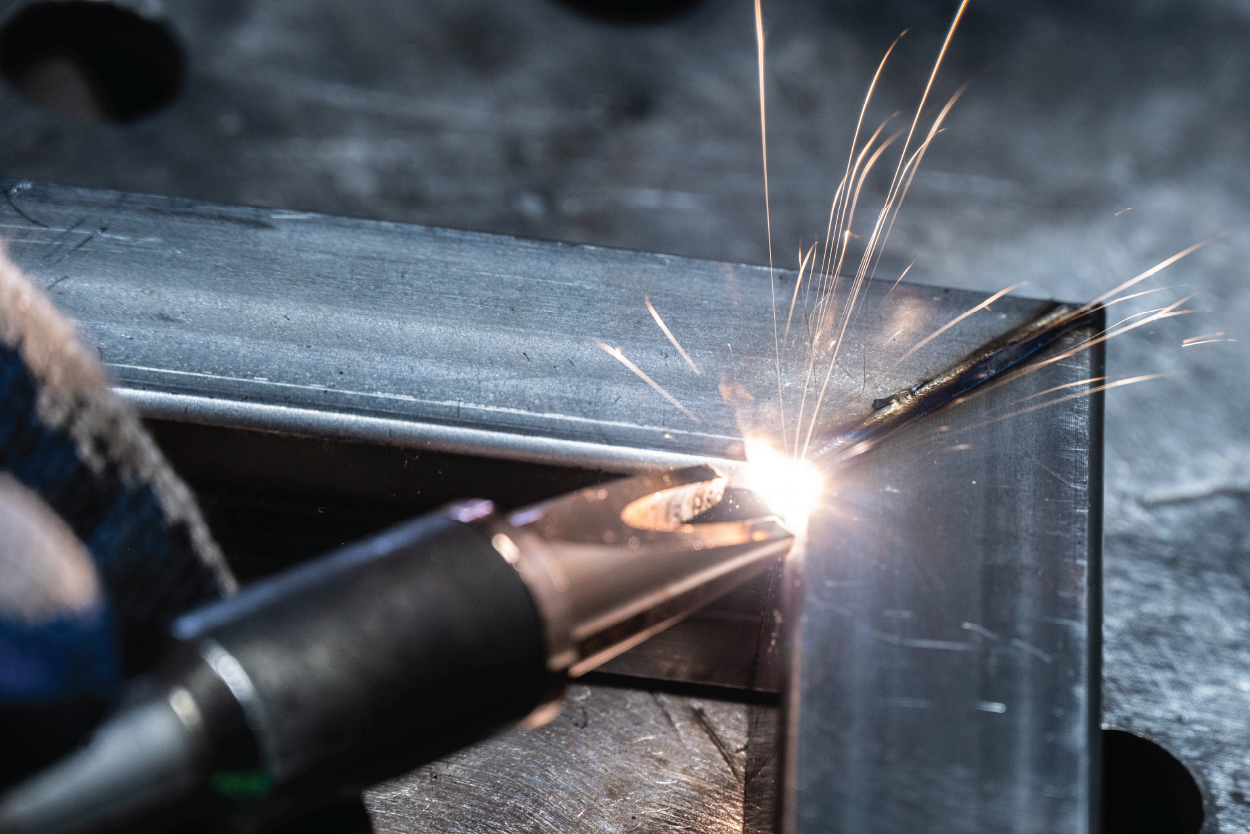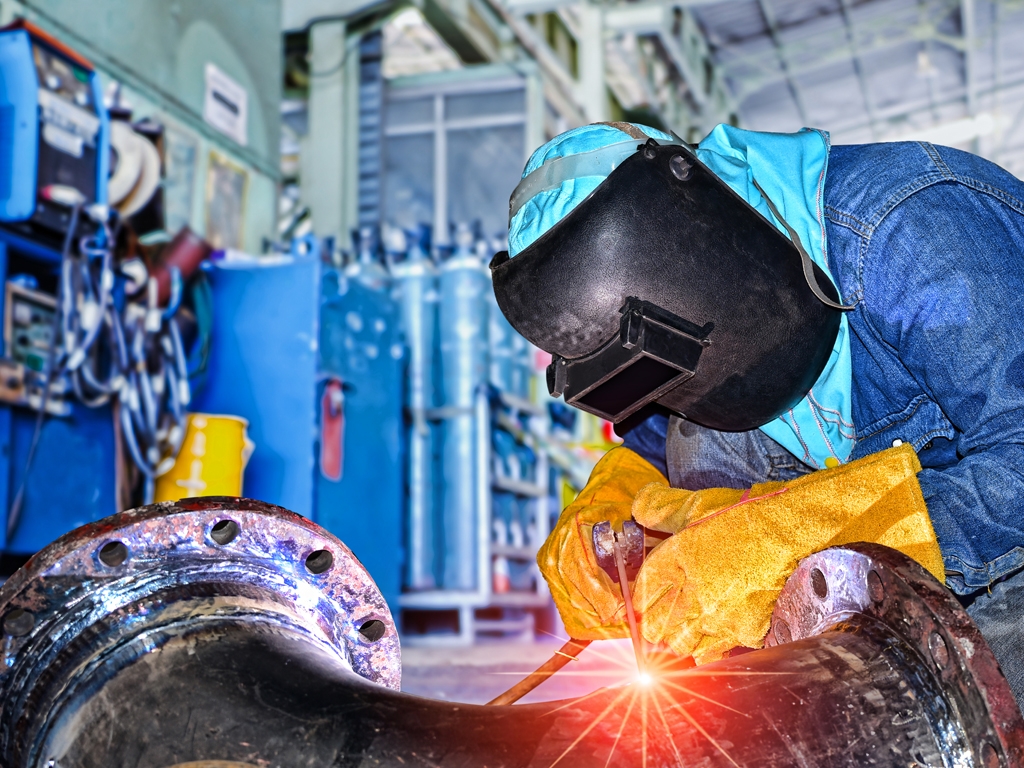Typical Welding Repair Issues and Exactly How to Address Them Effectively
Welding repair services typically experience a variety of concerns that can endanger the honesty of the final product. Typical troubles include insufficient penetration, porosity, and imbalance, to name a few. Each issue presents special obstacles that call for specific strategies for resolution. Understanding these problems is vital for welders intending to boost their results and abilities. This conversation will certainly discover these usual welding repair service problems and effective approaches to resolve them.
Inadequate Penetration
Poor penetration occurs when the weld metal fails to totally fuse with the base material, resulting in weak joints and prospective structural failures. This problem frequently originates from insufficient heat input, wrong electrode angle, or improper welding rate. Welders may come across inadequate infiltration due to a mistake of the essential specifications for a details product density or type. Furthermore, contamination on the base material's surface area can impede reliable bonding, worsening the trouble. To deal with poor penetration, welders should assure appropriate setups on their devices and maintain a tidy job surface. Normal inspection of welds is advised to determine any kind of shortages early, enabling for timely improvements and the prevention of compromised structural integrity in bonded settings up.
Porosity
Porosity is an usual defect in welded joints that materializes as tiny gas bubbles trapped within the weld steel. This issue can endanger the stability of the weld, resulting in reduced strength and potential failure under anxiety. Montana Mobile Welding and Repair Belgrade Fabrication. Porosity usually develops from contamination, wetness, or incorrect welding strategies, which enable gases to get away into the molten weld pool. To resolve porosity, welders should guarantee appropriate surface area preparation, preserve a clean working environment, and use appropriate welding parameters. Additionally, choosing the appropriate filler product and shielding gas can reduce gas entrapment. Normal evaluation and testing of welds can assist identify porosity early, ensuring prompt restorative activities are taken, thus maintaining the high quality and integrity of the bonded framework
Imbalance
Misalignment in welding can arise from various variables, including incorrect setup and thermal expansion. Understanding the root triggers is important for efficient resolution. Numerous improvement methods are available to straighten components and ensure architectural integrity.
Reasons for Imbalance
Welding imbalance usually originates from a range of underlying issues that can jeopardize structural honesty. One main reason is inappropriate fit-up of elements before welding, which can result in gaps and unequal surfaces. Variants in thermal development during the welding procedure can also result in distortion, specifically if the materials being joined have different coefficients of development. Additionally, poor clamping and fixturing may fall short to hold elements firmly in area, resulting in movement during welding. Badly kept tools, including welding devices and devices, might present inconsistencies in the weld bead, additional adding to misalignment. Operator mistake, stemming from not enough training or experience, can additionally play a considerable role in developing misaligned welds.

Correction Techniques Readily Available
Addressing imbalance efficiently needs a mix of restorative techniques tailored to the specific concerns at hand. One typical method is making use of jigs or components to hold components in the right placement throughout welding, making certain regular alignment. Furthermore, pre-heating the materials can help reduce distortion and enhance fit-up. For significant imbalance, mechanical adjustment strategies, such as utilizing hydraulic jacks or clamps, can be utilized to deal with the setting prior to welding. Post-weld warm treatment might additionally be needed to alleviate anxieties caused by imbalance. Lastly, careful evaluation and modification during the configuration stage can protect against imbalance problems from ending up being substantial problems, promoting a smoother welding process and boosting total architectural honesty.
Distortion
Distortion is a typical challenge in welding that can arise from numerous elements, consisting of uneven home heating and cooling. Comprehending the reasons for distortion is crucial for applying effective prevention techniques. Addressing this concern not only boosts structural stability but likewise boosts the overall quality of the weld.
Sources of Distortion
When subjected to the extreme warmth of welding, products typically go through changes that can result in distortion. This sensation mainly arises from thermal expansion and contraction during the welding procedure. As the weld area warms up, the product broadens; upon cooling, it gets, which can create internal stresses. In addition, uneven heating across a work surface can worsen these anxieties, leading to bending or flexing. The type of material also plays a substantial duty; steels with differing thermal conductivity and coefficients of development may respond in a different way, leading to unforeseeable distortions. Poor joint design and inadequate fixturing can contribute to misalignment throughout welding, increasing the likelihood of distortion. Understanding these reasons is vital for effective welding repair work and prevention approaches.
Avoidance Techniques
Reliable prevention strategies for distortion throughout welding concentrate on managing warm input and making certain proper joint style. Preserving a constant warmth input aids to decrease thermal growth and contraction, which can lead to distortion. Using methods such as preheating the work surface can also decrease the temperature gradient, advertising uniform home heating. In addition, picking proper joint layouts, such as T-joints or lap joints, can boost stability and decrease anxiety focus. Executing correct fixturing to safeguard the workpieces in area better help in maintaining alignment throughout the welding procedure. Staggered welding series can distribute heat extra uniformly, avoiding local distortion. By using these approaches, welders can considerably lower the possibility of distortion and improve the overall top quality of their welds.
Splitting
Splitting is a typical problem come across in welding repairs, typically arising from various factors such as inappropriate cooling prices, product option, or inadequate joint preparation. The incident of splits can substantially compromise the stability of the weld, causing potential failures during procedure. To resolve this issue, welders must initially evaluate the origin, ensuring that products work and appropriately selected for the specific application. In addition, controlling the air conditioning price throughout the welding procedure is crucial; quick air conditioning can cause tension and cause splitting. Appropriate joint layout and preparation also add to reducing the danger. Implementing these methods can improve weld quality and sturdiness, eventually decreasing the probability of splitting in ended up weldments.

Insufficient Fusion
A significant problem in welding repair work is insufficient fusion, which occurs when the weld metal does not adequately bond with the base product or previous weld passes - Welding. This issue can bring about weaknesses in the joint, why not look here potentially endangering the integrity of the welded framework. Factors contributing to insufficient fusion include not enough warmth input, incorrect welding method, and contamination of the surface areas being joined. To resolve this issue properly, welders need to assure correct pre-weld cleaning and surface prep work, in addition visit our website to readjust their welding criteria to attain adequate penetration and fusion. Normal inspection during the welding procedure can likewise assist determine incomplete fusion early, permitting for timely restorative measures to boost the overall quality of the weld
Overheating
While welding repair services can improve structural integrity, overheating presents a significant obstacle that can cause material degradation. Too much warm throughout welding can alter the mechanical buildings of metals, resulting in minimized strength, boosted brittleness, and warping. This sensation is specifically important in high-stress applications where structural integrity is critical. Recognizing overheating can involve aesthetic evaluations for discoloration or distortion, as well as keeping an eye on temperature level during the welding procedure. To minimize the threats connected with overheating, welders need to utilize appropriate methods, such as managing heat input, adjusting traveling rate, and using appropriate filler materials. Additionally, implementing pre- and post-weld heat treatments can help recover material residential or commercial properties and enhance the general top quality of the repair, making sure long-lasting efficiency and safety.
Often Asked Questions
What Are the Typical Indicators of a Welding Flaw?

Just How Can I Test My Welds for High quality?
To evaluate welds for quality, one can utilize aesthetic examinations, ultrasonic testing, and radiographic techniques. Each sites strategy guarantees architectural honesty, determines issues, and validates adherence to specified requirements, eventually boosting the integrity of the bonded joints.
What Security Precautions Should I Take While Welding?
When welding, one should prioritize security by putting on appropriate personal safety equipment, guaranteeing correct air flow, protecting combustible products away, maintaining a clean workspace, and being mindful of surroundings to avoid mishaps and injuries.
Can I Repair a Weld Without Redesigning the Entire Joint?
Repairing a weld without renovating the entire joint is possible, relying on the damage (Fabrication). Methods such as grinding, adding filler material, or making use of a welding procedure can effectively attend to certain defects while maintaining the bordering framework
What Equipment Are Vital for Reliable Welding Repairs?
Important tools for efficient welding repair services consist of a welding equipment, wire brush, grinder, safety gear, clamps, and filler products. Each tool plays a vital duty in guaranteeing top quality and safety during the fixing process. Porosity generally develops from contamination, wetness, or improper welding techniques, which enable gases to run away into the molten weld pool. Badly maintained devices, consisting of welding devices and tools, might present incongruities in the weld bead, more adding to misalignment. When subjected to the intense heat of welding, materials typically undergo adjustments that can lead to distortion. Splitting is an usual issue encountered in welding repair services, commonly resulting from different variables such as incorrect air conditioning prices, product selection, or inadequate joint preparation. A considerable problem in welding repair work is insufficient blend, which occurs when the weld steel does not appropriately bond with the base product or previous weld passes.